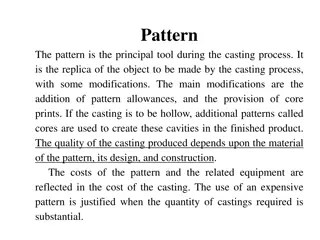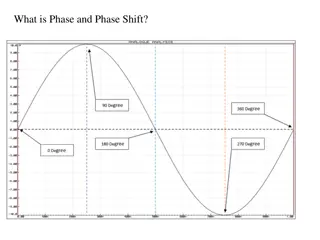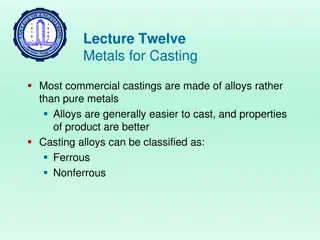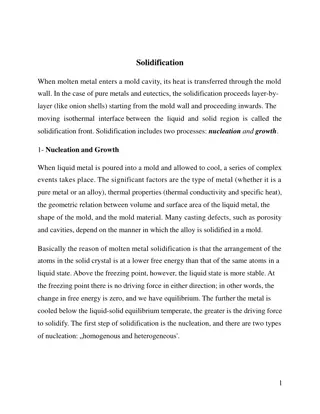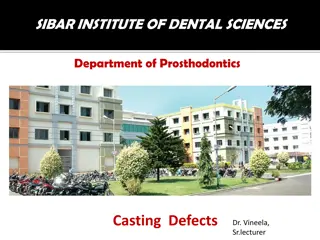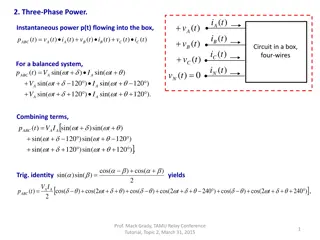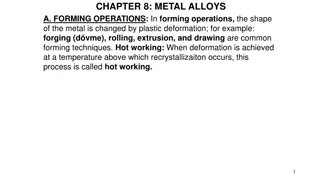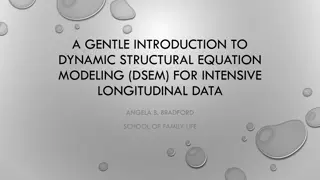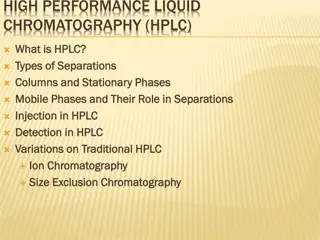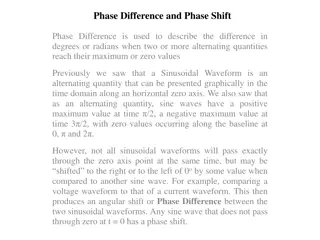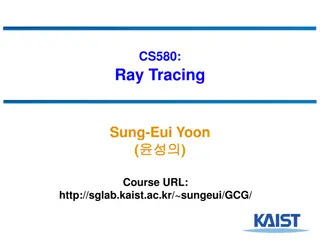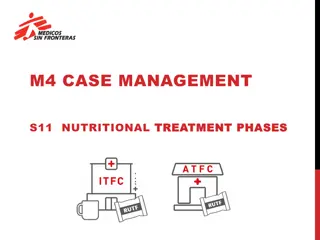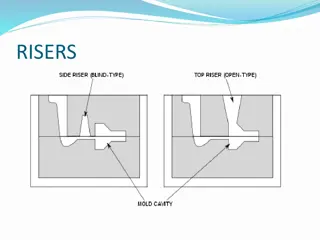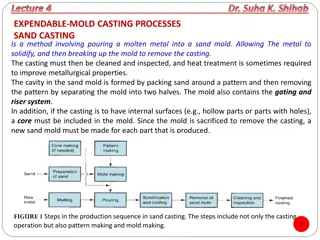Modeling Phase Change in Continuous Casting Process
This example illustrates the cooling and solidification process in continuous casting using the arbitrary Lagrangian-Eulerian method. It covers temperature distribution, phase change, flow field, and more.
Download Presentation

Please find below an Image/Link to download the presentation.
The content on the website is provided AS IS for your information and personal use only. It may not be sold, licensed, or shared on other websites without obtaining consent from the author.If you encounter any issues during the download, it is possible that the publisher has removed the file from their server.
You are allowed to download the files provided on this website for personal or commercial use, subject to the condition that they are used lawfully. All files are the property of their respective owners.
The content on the website is provided AS IS for your information and personal use only. It may not be sold, licensed, or shared on other websites without obtaining consent from the author.
E N D
Presentation Transcript
Continuous Casting Arbitrary Lagrangian-Eulerian Method
Motivation This example describes the cooling and solidification, from melt to solid metal, in a continuous casting process. The model includes nonisothermal properties, temperature distribution, flow field, and phase change. This example uses the arbitrary Lagrangian-Eulerian method for modeling the phase change.
Fluid domain Phase change interface Model Definition The model uses a Nonisothermal Flow multiphysics for the fluid domain. Solid domain Heat transfer is solved in the solid domain. Symmetry axis 1.6 mm/s A deforming geometry is introduced to model the evolution of the phase change interface. A casting speed of 1.6 mm/s is satisfied in the domain. Model geometry
Inlet temperature Fluid domain Phase change interface Model Definition Melted metal enters the domain from the top, and solid metal exits at the bottom. Solid domain Convective and radiative heat transfer The velocity of the solidification front is obtained from the Stefan s condition to which the casting contribution is added. Symmetry axis 1.6 mm/s Convection and surface-to-ambient radiation with the surrounding air are taken into account below the shoulder for the cooling process. Other boundaries are thermally insulated. Model boundary conditions
Results Melt enters the domain at a given temperature. The liquid metal alloy is then cooled by convection and surface-to- ambient radiation with the surrounding air. Once cooled to the melting temperature, the metal solidifies. Cooling is slower in the middle of the rod. In the solid metal, temperature distribution is much more uniform along the r-axis as conduction becomes higher inside the rod. Temperature distribution in the rod
Results In the melt, the velocity is higher in the center of the rod. High temperatures from the inlet are thus rapidly convected to the center, slowing the cooling process in this region. A recirculation cell can be identified at the shoulder. It can result in inhomogeneity of material properties, which is problematic. In the solid domain, velocity is constant and equal to the casting speed. Velocity field and streamlines



